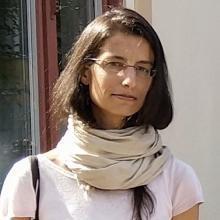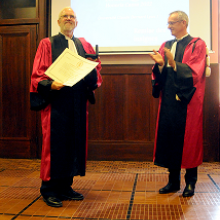Bioinformatics, Phylogeny and Evolutionary Genomics Group
Members
Maîtresse de conférences
UCBL
Tel: 04 72 44 84 87

Professeure des universités
UCBL
Tel: 33 04 26 23 44 76
Doctorante
UCBL
Enseignant-chercheur CPJ
UCBL

Directeur de recherche
CNRS
Tel: 33 04 72 44 62 97

Professeur d'université émérite
UCBL
Tel: 04 72 44 85 60
Ingénieur d'études CDD
CNRS

Directeur de recherche
CNRS
Tel: 33 04 72 43 11 67

Maîtresse de conférences
UCBL
Tel: 33 04 72 43 29 18
Doctorante
UCBL

Chargée de recherche
CNRS
Tel: 33 04 72 44 85 60

Directeur de recherche
CNRS
Tel: 04 72 44 84 87

Chargée de recherche
CNRS
Tel: 04 72 43 13 44

Directeur de recherche
CNRS

Maître de conférences
UCBL
Tel: 04 72 43 35 83

Chargée de recherche
CNRS
Tel: 04 72 44 81 42
Doctorant
CNRS

Directeur de recherche
CNRS
Tel: 33 04 72 44 62 96

Chargée de recherche
CNRS
Tel: 04 72 43 26 28
Doctorant
UCBL

Chercheur invité
UCBL
Our group focuses on two main axes: phylogenomics (i.e. the inference of evolutionary history based on genomics data) and evolutionary genomics (understanding the molecular and population processes that drive genome evolution). We see genomes both as a subject of research (how do genomes evolve, why are they structured the way they are?), but also as a main source of empirical knowledge about the macroevolutionary patterns (what do they tell us about the history of life on Earth?), or about the phenotypes and life-history strategies of organisms. Our works heavily rely on methodological developments (bioinformatics, modeling and statistical inference).
Evolution of genome architecture and expression
Genomes are the result of a long-term evolutionary process, shaped by multiple evolutionary forces. Some genomic features are adaptive (i.e. are beneficial for the fitness of organisms), others result from non-adaptive processes (random drift and biased gene conversion - BGC) or are caused by conflicts between multiple levels of selection (e.g. meiotic drive or the spread of selfish genetic elements). We explore different aspects of genome architecture (base composition landscapes, genome structure and size, impact of transposable elements, …) or functioning (gene expression, lncRNAs, epigenetic landscapes, …), and try to disentangle the relative contribution of adaptive and non-adaptive processes to their evolution. For this purpose, we consider both the molecular mechanisms (mutation, repair, recombination) and the population processes (selection, drift, BGC, …) that shape genetic variation.
Phylogenomics
We are interested in reconstructing the history of life on Earth. This research unfolds along several axes. First, we develop phylogenomic databases of aligned genetic sequences (e.g. BIBI, RiboDB or HOGENOM). Second, we conduct methodological research on how to accurately reconstruct deep phylogenies, infer divergence times, reconstruct ancestral genetic sequences, gene repertoires and life-history traits. This methodological work is translated into publicly available software programs (e.g. SeaView, PhyloBayes, Coevol). Finally, we apply these approaches to several important problems, among which: reconstructing the phylogeny of animals, of archaea, or the global tree of life; using phylogenies and ancestral gene repertoires to investigate the evolution of complex systems and the emergence of molecular and cellular functions in the three domains of life; reconstructing ancestral genetic sequences, a research activity that has industrial and biotechnological applications.
Teaching and outreach
We teach at University Lyon 1 (Master Bioinfo@Lyon), INSA, ENS Lyon, we organize bioinformatics internships. We regularly give conferences on evolution (tree of life, human evolution, genetic diversity, …).
Prospective students and postdocs are invited to apply, as we often welcome visitors for internships or research projects.
Keywords: Molecular evolution and Population Genomics; Phylogenomics; Computational Genomics; Comparative genomics; Bioinformatics; Statistical inference.
Publications
Display of 631 to 660 publications on 1105 in total
Biased Gene Conversion and the Evolution of Mammalian Genomic Landscapes
Annual Review of Genomics and Human Genetics . 10 : 285-311
Journal article
see the publicationL’évolution des chromosomes sexuels humains
Biofutur . 304 : 40-41
Journal article
see the publicationA pharmacologically based multiscale mathematical model of angiogenesis and its use in investigating the efficacy of a new cancer treatment strategy.
Journal of Theoretical Biology . 260 ( 4 ) : 545-62
Journal article
see the publicationIron-sulfur (Fe/S) protein biogenesis: phylogenomic and genetic studies of A-type carriers
PLoS Genetics . 5 : 261-268
Journal article
see the publicationQri7/OSGEPL the mitochondrial version of the universal Kae1/YgjD protein is essential for mitochondrial genome maintenance
Nucleic Acids Research . 37 : 5343-52
Journal article
see the publicationComparison of alignment free string distances for complete genome phylogeny
Advances in Data Analysis and Classification . 3 : 95-108
Journal article
see the publicationModeling of 2-D DNA display.
Electrophoresis . 30 ( 21 ) : 3649-56
Journal article
see the publicationFull-Length Genome Characterization of a Novel Simian Immunodeficiency Virus Lineage (SIVolc) from Olive Colobus (Procolobus verus) and New SIVwrcPbb Strains from Western Red Colobus (Piliocolobus badius badius) from the Taï Forest in Ivory Coast
Journal of Virology . 83 ( 1 ) : 428-439
DOI: 10.1128/JVI.01725-08
Journal article
see the publicationGenomic environment influences the dynamics of the tirant LTR retrotransposon in Drosophila.
FASEB Journal . 23 ( 5 ) : 1482-9
DOI: 10.1096/fj.08-123513
Journal article
see the publicationThe evolutionary dynamics of the Helena retrotransposon revealed by sequenced Drosophila genomes.
BMC Evolutionary Biology . 9 : 174
Journal article
see the publicationQri7/OSGEPL, the mitochondrial version of the universal Kae1/YgjD protein, is essential for mitochondrial genome maintenance.
Nucleic Acids Research . : epub ahead of print
DOI: 10.1093/nar/gkp557
Journal article
see the publicationComputational Methods for Evaluating Phylogenetic Models of Coding Sequence Evolution with Dependence between Codons
Molecular Biology and Evolution . 26 ( 7 ) : 1663 - 1676
Journal article
see the publicationHigh-throughput single nucleotide polymorphism genotyping in wheat (Triticum spp.)
Plant Biotechnology Journal . 7 ( 4 ) : 364-374
Journal article
see the publicationIn Retrospect: Lamarck's treatise at 200
Nature . 460 ( 7256 ) : 688-689
DOI: 10.1038/460688a
Journal article
see the publicationA White Campion textit(Silene latifolia) floral expressed sequence tag (EST) library: annotation EST-SSR characterization transferability and utility for comparative mapping
BMC Genomics . 10(243) : 1-14
Journal article
see the publicationSilene as a model system in ecology and evolution
Heredity . 103 : 583-589
Journal article
see the publicationDifferential retention of metabolic genes following whole-genome duplication
Molecular Biology and Evolution . 26 ( 5 ) : 1067-1072
Journal article
see the publicationDatabases of Homologous Gene Families for Comparative Genomics
BMC Bioinformatics . 10 (Suppl.6) :S3 : 13
Journal article
see the publicationEvolution of the mitochondrial ribosomal proteome
16th Annual Meeting of the Society of Molecular Biology and Evolution (SMBE'08) .
Poster
see the publicationDynamic nature of the proximal AZFc region of the human Y chromosome: multiple independent deletion and duplication events revealed by microsatellite analysis.
Human Mutation . 29 ( 10 ) : 1171-80
DOI: 10.1002/humu.20757
Journal article
see the publicationTranscription-Induced Mutational Strand Bias and Its Effect on Substitution Rates in Human Genes
Molecular Biology and Evolution . 26 ( 1 ) : 131-142
Journal article
see the publicationSex-specific genetic structure and social organization in Central Asia: insights from a multi-locus study.
PLoS Genetics . 4 ( 9 ) : e1000200
Journal article
see the publicationAncient bacteria liked it hot
Nature . 451 : 635-636
DOI: 10.1038/451635a
Journal article
see the publicationISG20L2, a novel vertebrate nucleolar exoribonuclease involved in Ribosome biogenesis.
Molecular and Cellular Proteomics . 7 : epub ahead of print
Journal article
see the publicationTranslational control of intron splicing in eukaryotes
Nature . 451 ( 7176 ) : 359-362
DOI: 10.1038/nature06495
Journal article
see the publicationBiased Gene Conversion and its Impact on Human Genome Evolution
incollection . -- : 273-277
Journal article
see the publicationRemote access to ACNUC nucleotide and protein sequence databases at PBIL
Biochimie . 90 ( 4 ) : 555-562
Journal article
see the publicationPolymorphism of the Staphylococcus aureus Panton-Valentine LeukocidinGenes and Its Possible Link with the Fitness of Community-Associated Methicillin-Resistant S. aureus
Journal of Infectious Diseases . 198 ( 5 ) : 792-794
DOI: 10.1086/590914
Journal article
see the publicationAcquisition of a bacterial RumA-type tRNA(uracil-54 C5)methyltransferase by Archaea through an ancient horizontal gene transfer
Molecular Microbiology . 67 : 323-335
Journal article
see the publicationGiant viruses giant chimeras: The multiple evolutionary histories of Mimivirus genes
BMC Evolutionary Biology . 8 : 1-7
Journal article
see the publication
